A few days ago I had James Reynolds on the podcast.
James built an 8-figure, 65 person SEO agency – SEO Sherpa – from scratch with a lot of smart (and not hard) marketing moves that anybody can recreate.
In this article I’ll break down 3 of his most effective tactics:
Thought leadership is bigger than it’s ever been and social proof does a ton to increase conversions.
These are the moves James used to get skeptical leads to say yes.
- Found relevant events to speak at.
- Started small. Looked through Meetup, Eventbrite, local Facebook groups, local business groups, event recommendations, etc.
- Emailed organizers, saying he’d be a good speaker. Included a one-sheet PDF with:
- His bio and headshot.
- Topics he could speak on.
- Links to past talks or video clips.
- (If you don’t have any past talks or clips, I share how to start below).
- Testimonials, if available.
- Asked for referrals after speaking.
- After every event, he asked organizers, “Who else do you know who runs events like this?”
- This built a snowball effect of new speaking opportunities.
- Spoke anywhere he could, including small and niche groups.
- Shared everything after on LinkedIn, social media, and to his email list:
- “Spoke at X event today.”
- Mentioned high-profile speakers he “shared the stage with” (even if not on the same day).
Why this worked:
- From James on the podcast: “Even if you feel like an impostor, you probably know more than 99% of the people in the room. This, and the public speaking, sharing what you know positions you as the expert.”
- Potential clients saw him speaking via his posts on social media. The social proof and authority increased conversions.
- The social proof also increased event organizer acceptance rates.
- When networking, new potential clients connected with him on LinkedIn or Instagram, saw his previous speaking engagements, and were a lot more likely to convert just based on that.
All of this still works – not just with public speaking, but podcasts as well – and even better, you can tie the two together.
This platform uses AI to match podcast hosts who want guests with relevant guests – so you can go on podcasts even if you’re an unknown person – just by being a relevant expert. Then you can share these podcast appearances in your public speaking one-pager. Even if you’ve never done public speaking, you now have podcast appearances to boost credibility. I have a guide on how to use that platform here.
This platform connects journalists looking for sources for their articles with relevant experts. I have an acceptance rate on there of over 70% – when I respond to a journalist there is a 7/10 chance my quote is used. And through that I’ve been quoted in some big publications, like Entrepreneur.

Help a Reporter Out and Source of Sources are also excellent for this, though more competitive.
This is how social proof and authority gets completely manufactured.
Start small – use small podcasts or small public speaking opportunities or quotes in small publications – share them publicly and put them in a press kit. The social proof and authority positioning allows you to get bigger and bigger opportunities.
Along the way, you close more potential clients, get more customers, close fundraising rounds, meet higher-level people, etc.
There’s a reason even private introverted billionaire founders like Evan Spiegel, the founder of Snapchat, are now embracing public speaking and podcasts.

Top-of-mind awareness, social proof, and authority positioning are so important for building trust.
BTW – and this has happened to me – even if you speak at events where disappointingly there’s not many people, you crop the image! People see you public speaking and they imagine the audience being there. Even tiny audiences can still help to close clients and customers and get bigger speaking opportunities.

Getting industry influencers to share your brand for free
I learned of James Reynolds from the 21 SEO Experiments article he wrote in 2016. It’s one of my favorite articles about SEO and it went viral when it came out.

What I didn’t know until my podcast with James is that he made the article go viral.
The article is 21 of the most interesting SEO experiments carried out – many of which were done by huge names in SEO, like Rand Fishkin or Dan Petrovic.
James wrote the article, then sent it to the influencers who were in it, saying essentially:
“Hey! I wrote this article that features one of your SEO experiments. I’m going to publish it in a few days – if you have a moment, please let me know if you’d like me to add context or make any tweaks before it goes live.”
This got the influencers invested in the article – they reviewed it or gave extra detail.
The aforementioned public speaking and social proof also made James into somebody worth sharing. He wasn’t just a random guy – he had positioned himself as an authority in the space.
When the article went live, simultaneously all these big names in the SEO community shared it on Twitter and LinkedIn.
And 9 years later this article is still being shared. A lot of the lessons in it are relevant today and I’ve shared most of the 21 experiments with individual episodes on my podcast. Crazy evergreen.
By the way, here’s the backlink data for it:

213 backlinks from 110 websites.
AI models for retention
The last thing I want to share – I asked James how he’s using AI in his agency.
He feeds AI everything – call recordings, transcripts, email correspondence, client sentiment data, billing patterns – and the AI accurately predicts client churn, flags risks early, and optimizes internal workflows.
James said of its accuracy: “It’s been crazy accurate. We’ve had clients hit a risk score of 8 or 9 out of 10, and then a week later, they hand in their notice.”
So now, when a client’s risk score starts climbing, James’s team steps in early – increasing communication and reviewing the work on the account to catch any issues in execution or lapses in responsiveness.
I could see this being done in all types of businesses – not just services.
I could even see this in SaaS – train an AI to predict customer churn and automatically trigger tailored retention workflows: personalized emails, in-app nudges, or account manager outreach before the customer even thinks about canceling.
Listen to the pod
There’s a lot more shared in the episode. You can watch below or listen on Spotify or Apple Podcasts.
Detail
If you appreciate the level of detail in these articles and want to learn SEO with the same degree of attention to detail, check out my SEO course, Compact Keywords.
It’s specifically SEO to get customers, not SEO to increase vanity metrics.
Get it here: https://edwardsturm.com/compact-keywords/
Thanks for reading.

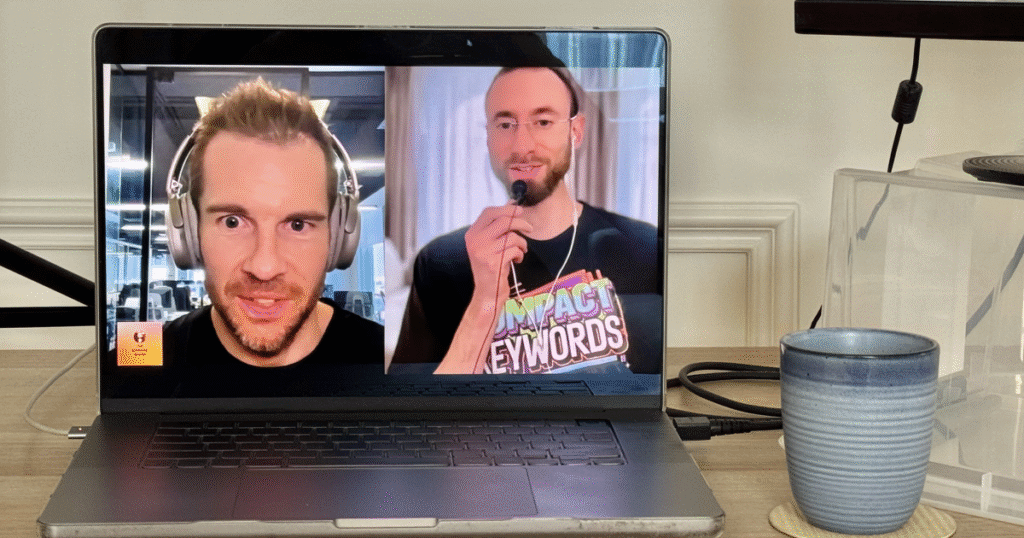

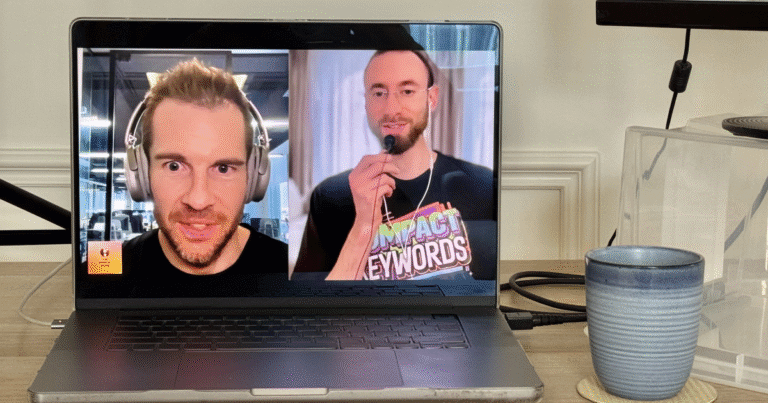

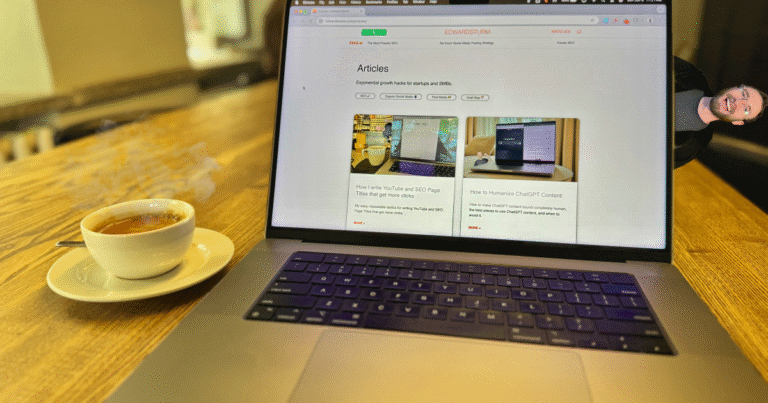
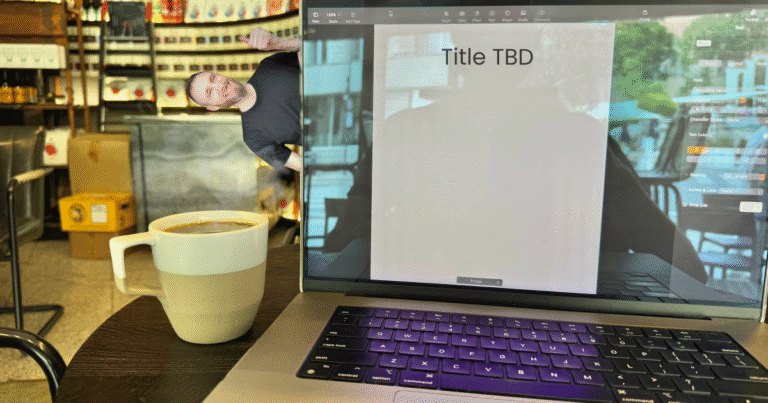
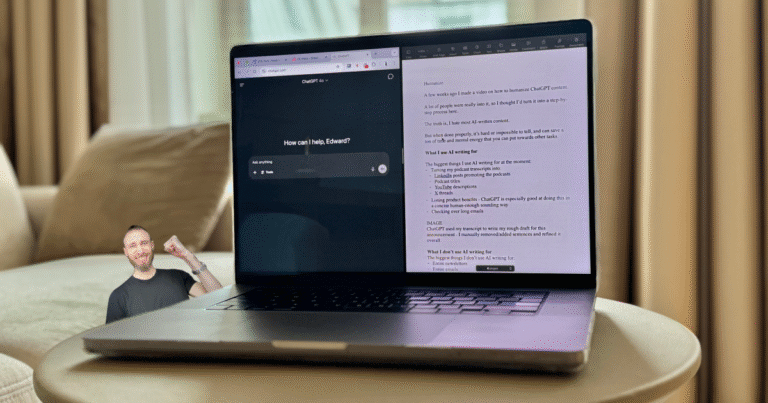


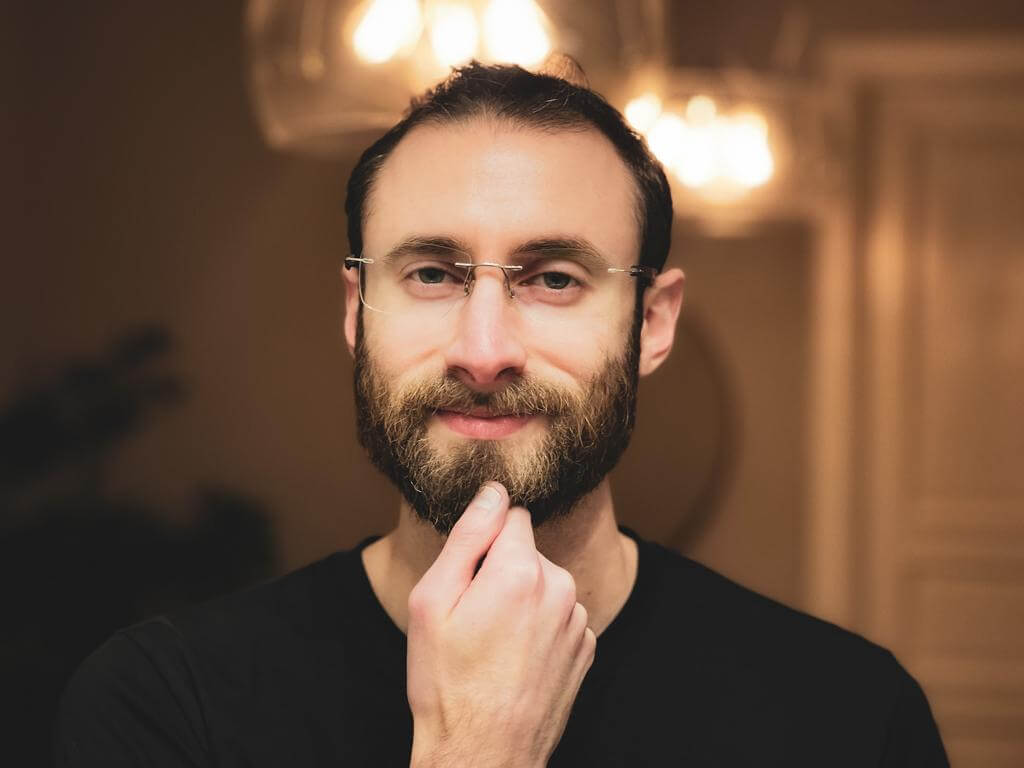
Thought leadership & social proof